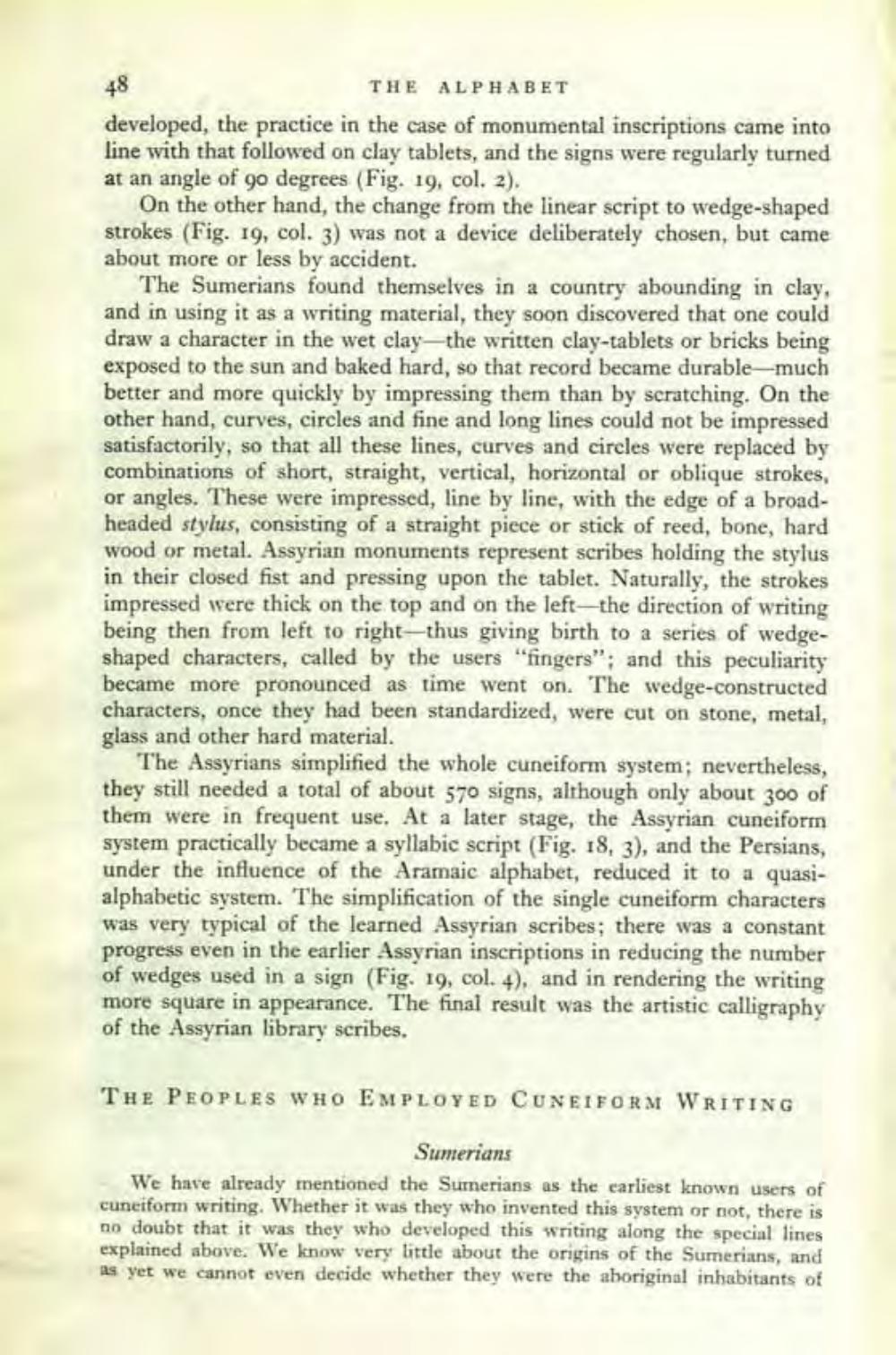________________
48
THE ALPHABET developed, the practice in the case of monumental inscriptions came into line with that followed on clay tablets, and the signs were regularly turned at an angle of go degrees (Fig. 19, col. 2).
On the other hand, the change from the linear script to wedge-shaped strokes (Fig. 19, col. 3) was not a device deliberately chosen, but came about more or less by accident.
The Sumerians found themselves in a country abounding in clay, and in using it as a writing material, they soon discovered that one could draw a character in the wet clay-the written clay-tablets or bricks being exposed to the sun and baked hard, so that record became durable-much better and more quickly by impressing them than by scratching. On the other hand, curves, circles and fine and long lines could not be impressed satisfactorily, so that all these lines, curves and circles were replaced by combinations of short, straight, vertical, horizontal or oblique strokes, or angles. These were impressed, line by line, with the edge of a broadheaded stylus, consisting of a straight piece or stick of reed, bone, hard wood or metal. Assyrian monuments represent scribes holding the stylus in their closed fist and pressing upon the tablet. Naturally, the strokes impressed were thick on the top and on the left--the direction of writing being then from left to right-thus giving birth to a series of wedgeshaped characters, called by the users "fingers"; and this peculiarity became more pronounced as time went on. The wedge-constructed characters, once they had been standardized, were cut on stone, metal, glass and other hard material.
The Assyrians simplified the whole cuneiform system; nevertheless, they still needed a total of about 570 signs, although only about 300 of them were in frequent use. At a later stage, the Assyrian cuneiform system practically became a syllabic script (Fig. 18, 3), and the Persians, under the influence of the Aramaic alphabet, reduced it to a quasialphabetic system. The simplification of the single cuneiform characters was very typical of the learned Assyrian scribes; there was a constant progress even in the earlier Assyrian inscriptions in reducing the number of wedges used in a sign (Fig. 19, col. 4), and in rendering the writing more square in appearance. The final result was the artistic calligraphy of the Assyrian library scribes.
THE PEOPLES WHO EMPLOYED CUNEIFORM WRITING
Sumerians We have already mentioned the Sumerians as the earliest known users of cuneiform writing. Whether it was they who invented this system or not, there is no doubt that it was they who developed this writing along the special lines explained above. We know very little about the origins of the Sumerians, and as yet we cannot even decide whether they were the aboriginal inhabitants of




